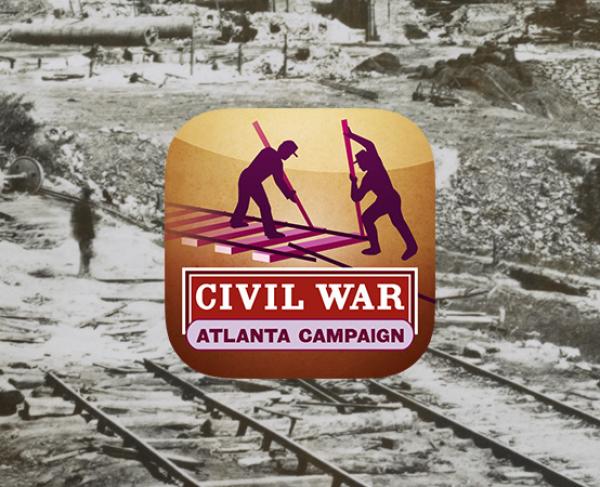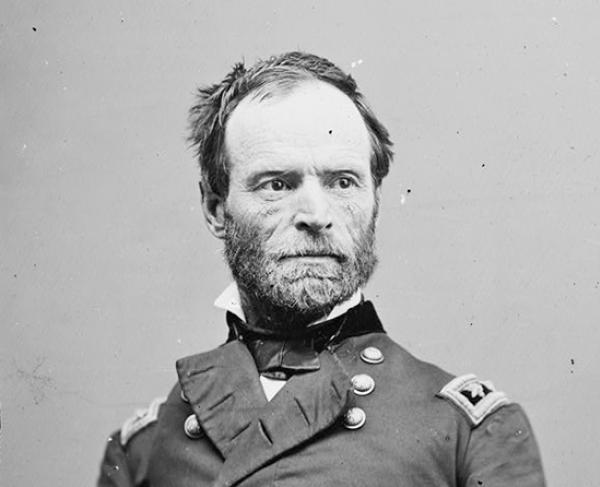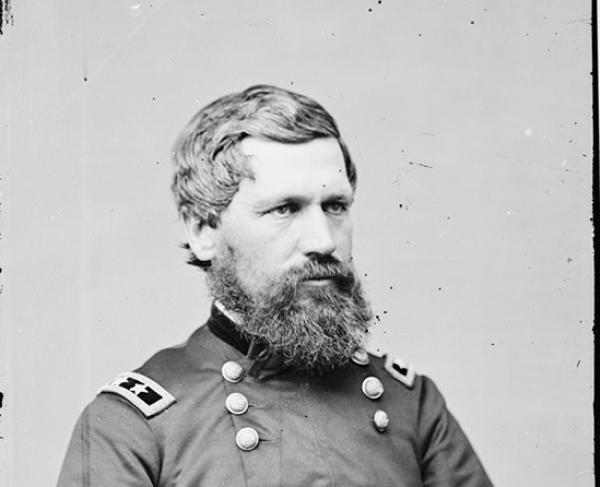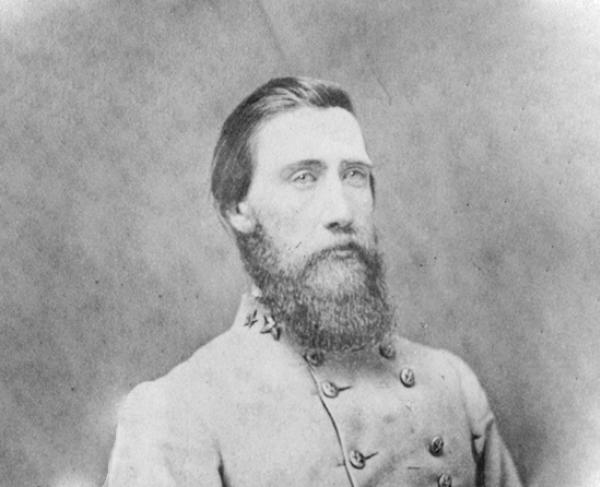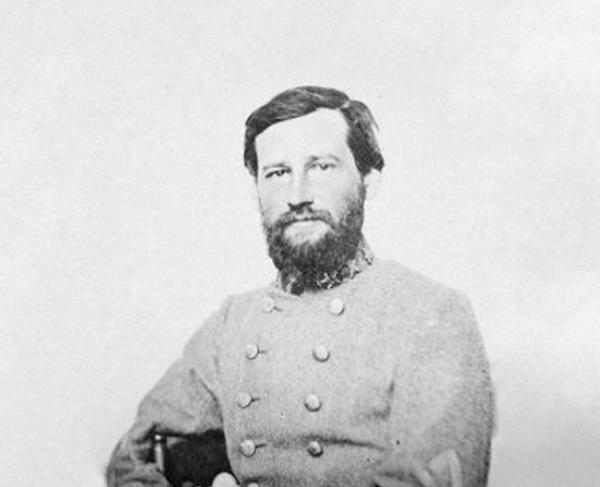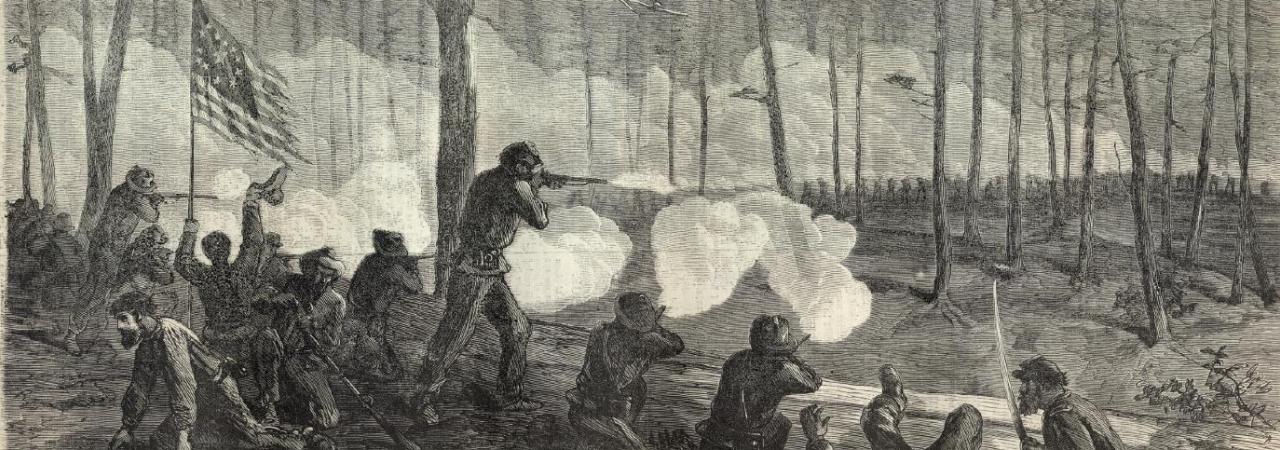
Ezra Church
Ezra Chapel; Poor House
Fulton County, GA | Jul 28, 1864
After his July 22, 1864 victory at the Battle of Atlanta, with the Georgia Railroad cut, Maj. Gen. William T. Sherman turned his attention to the Macon & Western and Atlanta & West Point Railroads, running southwest from the city. Prior to moving, Sherman adjusted his armies: Maj. Gen. John Schofield’s Army of the Ohio would hold the east edge of the city, while Maj. Gen. George Thomas’ Army of the Cumberland took up position to the north. Spearheading the movement to the southwest toward the Macon & Western would be the Army of the Tennessee, now under Maj. Gen. Oliver O. Howard. Early in the morning of July 27, Howard's troops set out but Confederate cavalry was alert. At 4:15 a.m., with Howard's march just a few hours in progress, Confederate commander Lt. Gen. John B. Hood's headquarters was warned by Maj. Gen. Joseph Wheeler that "indications are that the enemy will attack our left."
Unmolested, Howard’s men filled in on Thomas’ right and extended the Union line toward the railroad during the day. By nightfall, Howard had pushed Sherman's right flank almost two miles to the south of Thomas and due west of Atlanta. On the 28th, soldiers dug in and brought up artillery all along Howard's line. Maj. Gen. John “Black Jack” Logan, who held the extreme right of Howard’s army with the XV Corps, ordered two of his divisions to extend the line to the west parallel to Lick Skillet Road in preparation for a possible attack. Logan's men piled up rails and logs as impromptu breastworks. The Illinoisan also ordered plenty of ammunition brought forward, a hundred rounds per man. The Federals were getting ready for a fight.
Hood planned to give it to them. To Lt. Gen. Stephen D. Lee, his youngest (30 years old) and newest corps commander, he issued these orders: march west out of the city along Lick Skillet Road, and take position near Ezra Church three miles from town. The church lay at a key crossroads, for bisecting Lick Skillet was the north-south thoroughfare which the Yankees would be using in their move south. Lee was to seize this important crossroads and entrench facing north. Maj. Gen. Alexander Stewart's corps also had a role. Stewart was to lead two divisions via Lick Skillet to the western edge of Atlanta's defenses and wait for Lee to get into position at Ezra Church; then, the next morning, "we were to move out on that road, turn to the right, pass in rear of the enemy, and attack," presumably against the Federals' right rear, after marching beyond Lee's divisions holding the front.
There was a hitch, though. Logan's Union infantry already held Ezra Church and the vital Lick Skillet junction. Lee did not know that, however, as he sent two of his divisions under Brig. Gens. John C. Brown and Henry Clayton marching west out of Atlanta's works around 10:00 a.m. on the 28th. After a mile or so, Brown, in the lead, came upon friendly cavalry, who reported the Yankees in their front. This threw off Hood's whole plan. Gone was the hope of Lee's corps taking a defensive position at Ezra Church while Stewart set up for a flank attack. The Yankees were already there. The young Lee exercised field officer’s discretion and determined to attack the enemy straightaway.
Lee formed Brown's division and sent it in around noon. Through thick woods Brown's brigades advanced. The Federals opened up, and from their hastily-built works of log and stone delivered cruel, effective fire. Brown's attack began to fall apart. With a Yankee counterattack, the division commander sadly watched his men "driven with great slaughter."
Ten minutes after Brown had begun, Clayton's division arrived, which Lee promptly ordered to advance. Unfortunately for the Southerners, Lee's battle was becoming one of uncoordinated attacks by troops as they arrived. The bluecoats heard the fire to their right (the attack of Brown's division) and stood ready in their makeshift works of rails and trenches. The men of Woods' right brigade, Col. Hugo Wangelin's, had gone into Ezra Church and pulled out the pews to reinforce their parapets. Howard hurried assistance to Logan's threatened line. A dozen regiments were ordered from the XVI and XVII corps, and some rushed into the fight in time to help beat back Clayton's assault. Clayton had had enough. He posted his reserve brigade against possible Yankee counterattack and awaited orders.
The two divisions of Lee's corps were through for the day, but not so for Stewart's corps. Having marched west on Lick Skillet to the line of the city's defensive fortifications, Stewart learned that Lee had already joined battle, so he hastened forward with Maj. Gen. Edward Walthall's division, then Maj. Gen. William Loring's. Lee, believing the enemy had just barely beaten him to the Ezra Church crossroads and therefore had only slight defensive works, determined to continue the attack when Walthall arrived. And so the slaughter continued as Walthall's brigade advanced shortly after 2:00 p.m. over the same ground covered by Brown. Fierce musketry dropped Rebels by the hundreds before they fell back, seeking what shelter they could. Walthall ordered no more charges. The Battle of Ezra Church was over. Skirmishing rattled throughout the rest of the day until the Confederates withdrew under cover of nightfall.
The Northerners, fighting on the defensive, suffered fewer casualties at Ezra Church. Howard's Army of the Tennessee, although failing to reach the railroad, closed the battle with fewer than 650 men lost. Confederate casualties will never be confirmed, but a reasonable estimate would be more than 2,800 men, possible reaching 3,000.
Ezra Church: Featured Resources
All battles of the Atlanta Campaign
Related Battles
13,266
18,450
642
3,000

